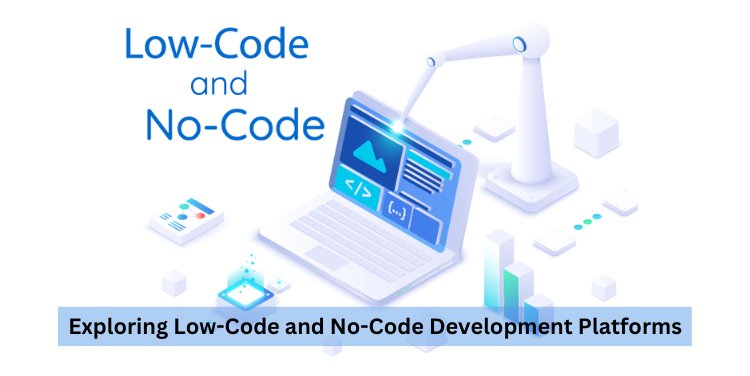Exploring Low-Code and No-Code Development Platforms

In today's fast-paced digital landscape, businesses are constantly seeking innovative solutions to stay ahead of the curve. Traditional software development methods often come with lengthy development cycles, high costs, and a heavy reliance on specialized coding skills. Enter low-code and no-code development platforms, revolutionizing the way applications are built and accelerating digital transformation across industries.
Understanding Low-Code and No-Code
Low-code platforms enable developers to create applications with minimal hand-coding, leveraging visual interfaces and drag-and-drop functionality to design and deploy solutions rapidly. These platforms abstract much of the underlying complexity, allowing developers to focus on building logic and functionality rather than writing lines of code.
No-code platforms take this abstraction a step further, empowering business users and citizen developers to create applications without any programming knowledge. Through intuitive interfaces and pre-built templates, users can design, customize, and deploy applications to address specific business needs, all without writing a single line of code.
Benefits of Low-Code and No-Code Development
Accelerated Development: By reducing the need for manual coding and streamlining the development process, low-code and no-code platforms significantly shorten the time-to-market for new applications and features.
Increased Agility: With the ability to iterate quickly and make changes on the fly, organizations can adapt to evolving market demands and user feedback more effectively, driving innovation and competitive advantage.
Empowered Citizen Developers: No-code platforms democratize app development, allowing individuals from various departments and backgrounds to contribute their ideas and build solutions tailored to their unique needs.
Cost-Efficiency: By minimizing the reliance on specialized developers and speeding up development cycles, low-code and no-code platforms offer a more cost-effective approach to building and maintaining applications.
Scalability and Flexibility: These platforms provide scalable infrastructure and flexible deployment options, enabling organizations to grow and adapt their applications as their business requirements evolve.
Use Cases and Applications
From automating business processes and creating customer-facing applications to developing internal tools and analytics dashboards, low-code and no-code platforms find applications across a wide range of industries and functions:
Workflow Automation: Streamline repetitive tasks and improve efficiency by automating workflows for approvals, notifications, and data processing.
Mobile App Development: Build cross-platform mobile applications for employees, customers, or partners without extensive coding expertise.
Data Visualization: Create interactive dashboards and reports to visualize data insights and drive informed decision-making.
Integration and Connectivity: Seamlessly connect disparate systems and applications, enabling data exchange and synchronization across the organization.
Prototyping and MVP Development: Quickly validate ideas and concepts by prototyping applications and minimum viable products (MVPs) before investing in full-scale development.
Future Outlook
As low-code and no-code platforms continue to evolve, we can expect to see further enhancements in capabilities, integrations, and scalability. These platforms will play a crucial role in empowering organizations of all sizes to innovate faster, adapt to changing market dynamics, and unlock new opportunities for growth.
Low-code and no-code development platforms are reshaping the landscape of software development, democratizing access to application creation and empowering organizations to drive innovation at unprecedented speed. By embracing these platforms, businesses can unleash their creativity, accelerate digital transformation, and stay ahead in today's competitive marketplace.
What's Your Reaction?















